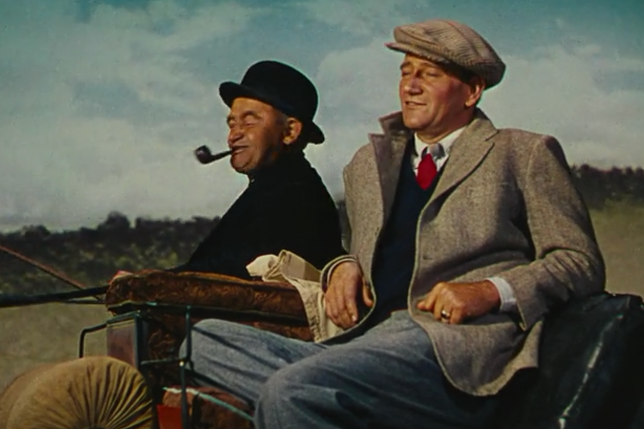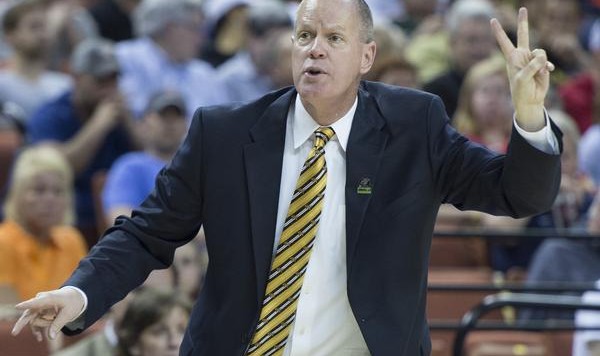It’s a reality which merits constant examination: College basketball is a house with many rooms. It’s a sport in which coaches can find many different niches, many different jobs where they can establish themselves and enjoy a certain kind of lifestyle.
Naturally, the differences among college basketball programs are most easily found when dividing schools on a broader level: high-majors versus mid-majors, power conferences versus one-bid conferences. There’s North Carolina, Duke, and Kentucky over here, with North Florida, Princeton, and Stephen F. Austin over there.
However, in this house with many rooms, there’s so much more to explore. Solely within the realm of the power conferences alone, a highly-tiered substructure exists. Certain programs aspire to greatness at the highest level. Others — hoping to one day become goliaths — want to at least maintain annual relevance in the sport. Still other power-conference programs inhabit an environment, shaped by the past, in which a modest frequency of achievement would bring a great deal of fulfillment and satisfaction.
It’s that last category we’ll focus on in this piece.
*
North Carolina, Kentucky, Duke, Kansas — these and a few other programs compete for national championships and Final Fours. We know this.
After that top tier of heavyweights, the discussion becomes more complex. Florida became, under Billy Donovan, a program whose aim was to make the Final Four, but now that Billy D is in the NBA, the Gators might not remain that kind of program. At the very least, it’s reasonable to contest the claim instead of accepting it at face value.
A program such as West Virginia or Butler might have made the Final Four six years ago, but that doesn’t necessarily mean either school enters each season playing for the Final Four. Everyone hopes to make college basketball’s Holy Grail, but expectations are different from hopes. If West Virginia and Butler make Sweet 16s every season — and produce regular seasons indicative of a Sweet 16 team, meaning that they don’t just get hot in March but are consistently good throughout the campaign — the fan bases will be happy. They might want two more wins than a Sweet 16, but they’ll know they’re in a good place.
Now, to the matter at hand: What about all the power-conference teams which would surely love to make a Sweet 16 (forget about the Final Four), but are just trying to establish themselves at a modest level? What about the power-conference programs saddled by the past, unable to gain much of any sustained traction over the past 25, 30, 40 years?
College basketball’s house with many rooms is a house which can accommodate varying degrees of success. As we try to put the 2016 college basketball regular season in perspective, consider the work of one man (and others like him) who is rewriting his program’s history in a good way… but won’t receive much of any national recognition.

John Wayne is “The Quiet Man” who received plenty of attention for this movie role. Tad Boyle and other college basketball coaches are quiet men who — like The Duke — succeed in their profession. Unlike John Wayne, however, Boyle won’t get a fraction of the publicity his work deserves. It’s not unfair; it’s merely a reflection of the vastness of the industry. Not all jobs carry the same amount of prestige, and coaches know that when they enter the business.
Did you know…
… that when the Colorado Buffaloes are announced as an NCAA tournament team on Selection Sunday (they will be; their status is no longer in doubt), coach Tad Boyle will make his fourth Dance appearance with the school. That will be the highest number of NCAA trips by any CU men’s basketball coach. Keep in mind, too, that Colorado should have made the NCAAs in 2011, only to be snubbed (along with Virginia Tech) when UAB and USC were sent to the First Four in Dayton.
Boyle is a pioneer in the Rocky Mountains. He has set the bar higher than any previous Colorado coach over the past 40 years. He’s succeeded more regularly than his predecessors. Colorado is one of those schools — not just this year, but in most (if not all) of its previous NCAA appearances under Boyle — which quietly makes an 8-9 or 7-10 game, usually loses, and departs from the clamorous theater of March Madness without anyone really noticing.
For a lot of power-conference programs, losing in the round of 64 is a failure, a deeply distressing event.
At Colorado, it’s a successful season.
The Buffaloes, from 1939 through 1963, achieved at a very high level in college basketball. Two Final Fours and four Elite Eights in 25 seasons represents a body of achievement most Division I schools would kill for. However, that early period of prosperity gave way to a long desert wilderness. From 1964 until the start of Boyle’s tenure at the beginning of this decade, Colorado reached only three NCAA tournaments, winning only one elimination game. (The Buffs won a regional third-place game in 1969 after losing in the Sweet 16.)
At UCLA and Arizona and even in Pac-12 places such as Oregon (Nike money) and USC (Los Angeles), aspirations exist at a high level. In the collection of states which always exist on Mountain time (Arizona being half-Mountain, half-Pacific), it’s hard to identify a single program which expects to make the Final Four every year. Utah got there once under Rick Majerus, but the Utes have to do a lot of heavy lifting just to make the Sweet 16.
Colorado just isn’t at a point where Final Four or Sweet 16 goals — as well-intentioned as they might be — ought to represent the present-day standard.
Tad Boyle, by making a fourth NCAA tournament, is putting the barren years of Boulder basketball (1964-2010) in the past. Merely getting to the round of 64 might not seem all that sexy, and it won’t create a surge of national publicity, but it sure does represent success.
College basketball’s house offers a very comfortable room to the coach who can regularly make the NCAA tournament at Colorado, in much the same way that it offers a similarly cushy dwelling place to the man who can occasionally make the tournament at Oregon State, or Washington State, or (in another part of the country) South Carolina.
Tad Boyle has quietly flourished at his job. Jamie Dixon of Pittsburgh (10 NCAA appearances) is about to make his 11th Big Dance. That’s more than double the amount of NCAA trips any other Pittsburgh coach has earned (Paul Evans, 5). Phil Martelli of Saint Joseph’s is about to make his seventh journey to Bracketville in 21 seasons. In the 21 seasons before Martelli took over the program (1975-1995), the Hawks made just three NCAA appearances.
How should one evaluate the 351 coaches who plied their trade this season? Many different measurements exist, but history in a given location is certainly one of them. By that standard, Tad Boyle and others like him are doing extremely well… even if the cameras remain focused on the blueblood programs chasing Final Fours this time of year.

